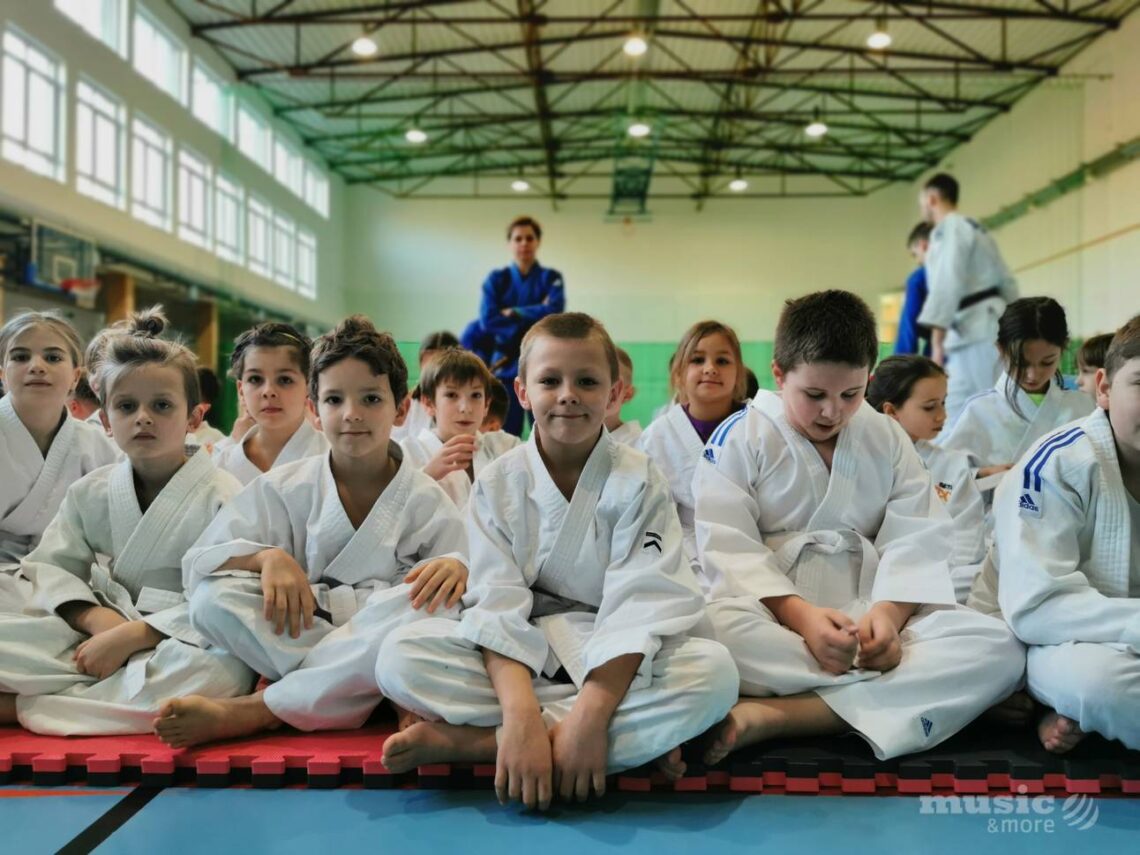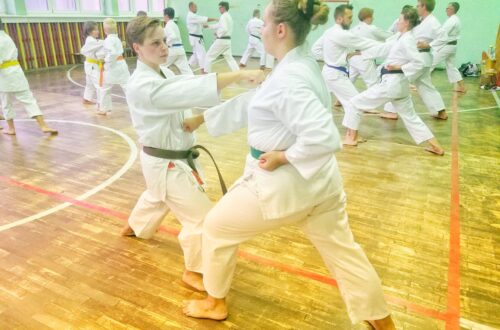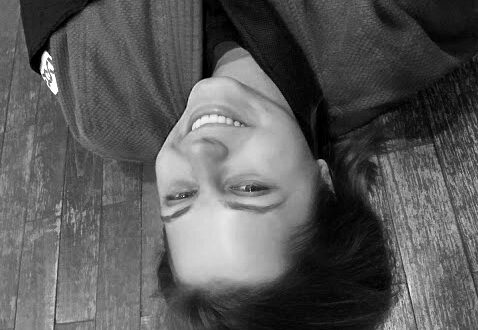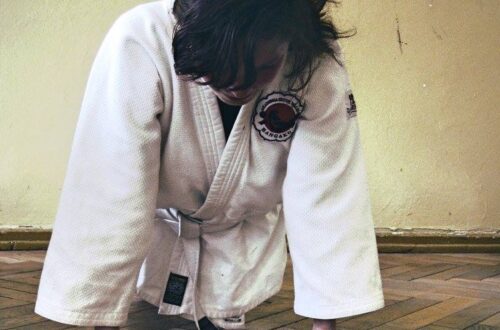
Najgorszy koszmar trenera|Coach’s worst nightmare
Nie widzą Cię i nie słyszą dopóki nie jesteś na ekranie.
Dlaczego?
Ponieważ nosisz białe gi i czarny pas. Jesteś nieciekawy. Czarno-biały.
Szklane dzieci.
Czasem naprawdę ciężko stać się dla nich widzialnym i ciekawszym niż gra komputerowa.
Niestety taka jest rzeczywistość.
Dzieci, które stawiały swoje pierwsze kroki ze smartfonem w rękach. Dzieciaki, które nie potrafią włączyć długopisu i przyłożyć go do kartki papieru, ale w wieku trzech lat bez problemu odnajdą i uruchomią ulubioną aplikację. Dzieciaki, które po trzydziestokrotnym powtórzeniu tego samego rozglądają się nieprzytomnie wokół i nie wiedzą co robić.
Przerażające, prawda? Tym bardziej, że… Dzieci to nasza przyszłość. Należy je edukować, szkolić i wychowywać. Ale to oznacza, że trzeba im poświęcać swój czas, uwagę oraz wymagać od nich.
Niestety bardzo często rodzice o tym zapominają. Łatwiej dać dziecku tablet czy telefon niż porozmawiać, wysłuchać co się działo w szkole, pograć w piłkę (realnie, a nie na komputerze) czy chociaż pójść na spacer.
Najłatwiej również wypchnąć te niegrzeczne dzieci z domu i zrzucić obowiązek wychowania na innych. Niech się z nimi użera nauczyciel w świetlicy, niech na korepetycjach pani głowi się co począć z takim gagatkiem.
Niech trener na treningu sobie radzi. Przecież taka jego rola.
Owszem.
Trener musi sobie poradzić. Jest również a może przede wszystkim wychowawcą. Odkopałam notatki z pierwszego semestru kultury fizycznej i zdrowotnej i w oko wpadły mi piękne słowa Krzysztofa Sas – Nowosielskiego:
„Nie masz wyboru. Jesteś wzorem do naśladowania i wychowawcą moralnym, czy ci się to podoba, czy nie. Kwestia nie leży w tym, czy jako trener zdecydujesz się uczyć wartości, lecz jakich wartości będziesz uczył…”.
Trafione.
W sam środek.
Wszystko, co robi trener, a więc to: w jaki sposób prowadzi zajęcia, jakie stosuje metody wychowawcze, jak zwraca się do swoich podopiecznych, w jaki sposób motywuje, jak komentuje wydarzenia oraz jakich definicji sukcesu uczy – wnosi wiele dla rozwoju osobowości młodego człowieka – jego samooceny, uznawanych wartości, postaw itp.
Zajęcia sportowe dają szanse na ukształtowanie sylwetki społeczno-moralnej. Często na treningach pojawiają się dzieciaki niewrażliwe na rutynowe środki i metody wychowania moralnego. Tymczasem aktywność fizyczna ma dużą moc przyciągania uwagi. Tym bardziej jeśli są to zajęcia potencjalnie ciekawe, czyli sztuki walki.
Czy to będzie judo czy karate to trener ma właściwie te same zadania do wykonania. Ma nauczyć i wychowywać. Teraz moi drodzy wyobraźcie sobie dwudziestkę dzieciaków w grupie początkującej.
Dzikich, nieokiełznanych, rozkojarzonych i nienauczonych słuchania.
Dwadzieścioro gagatków nad którymi trener musi zapanować, by zajęcia były bezpieczne, i by można było ich czegoś nauczyć.
Przejdźmy teraz do narzędzi służących opanowaniu tych dzikich osobników.
Po pierwsze – Granice i Dyscyplina
Dzieci powinny zrozumieć, co jest akceptowalnym zachowaniem w dojo. Ze względu na bezpieczeństwo. Kara musi być krótka i nigdy nie powinna poniżać ani zastraszać. Wystarczy 10 pompek i szybkie wyjaśnienie. Osobiście jestem wielką fanką uczniów siedzących z nogami skrzyżowanymi i złożonymi rękami, gdy mówię. To ich utrzymuje w skupieniu. Dzieci powinny zrozumieć, że dojo jest miejscem szacunku. Muszą zrozumieć, że nieodpowiednie zachowanie prowadzi za sobą konsekwencje. Wierzcie lub nie, ale dzieci uwielbiają dyscyplinę, gdy jest dobrze przedstawiona i wykorzystywana.
Po drugie – Rutyna i struktura treningu
Małe dzieci kochają strukturę i powtarzalność. Dlatego nie bój się powtarzać tych samych ćwiczeń co tydzień, dopóki wszyscy uczniowie nie zrobią tego dobrze. Dzieci również lubią wiedzieć, co będą robić, zanim to zrobią. Właśnie dlatego komunikacja jest tak ważna. Lubię używać komend słownych w postaci „teraz”, „potem” i „po”. Dobrze wprowadzić między nauką technik jakąś zabawę czy grę ruchową, żeby nie zlasować dzieciom mózgów.
Po trzecie – Relacje
Trener nie jest tylko „odtąd dotąd” i koniec. Komendy na treningu nie mogą być jedynymi słowami, które wychodzą z jego ust. Ważne jest budowanie relacji z uczniami. Bardzo ważne jest żebyś znał imię każdego z dzieci, które trenujesz. Jeśli Jasiek chce Ci o czymś opowiedzieć (z reguły przed lub po zajęciach) to go wysłuchaj. Przecież chcesz by słuchał gdy Ty coś mówisz. Niech Jasiek czuje, że może Ci zaufać, że interesuje Cię co ma do powiedzenia. To naprawdę buduje szacunek w oczach dziecka.
Skoro trener jest w stanie zbudować dobre relacje z dzieciakami i daje radę poświęcić im swój czas, to może jednak rodzice zamiast smartfona podarują dzieciom swój czas?
#dzieci #pokolenie_smartfona #rodzice
They cannot see and hear you until you are on the screen.
Why?
Because you wear white gi and a black belt. You’re uninteresting. Black and white.
Glass kids.
Sometimes it’s really hard to become visible and more interesting to them than a computer game. Unfortunately, this is the reality.
Children who took their first steps with a smartphone in their hands. Kids who can’t turn on a pen and put it on a piece of paper, but at the age of three, they will easily find and run their favorite application. Kids who, after repeating the same thing thirty times, look around blankly and don’t know what to do.
Scary, isn’t it? The more so because… Children are our future. They need to be educated and trained. But it does mean that you have to devote your time, attention and demand to them.
Unfortunately, parents often forget about it. It’s easier to give your child a tablet or phone than to talk, listen to what was happening at school, play football (in real terms, not on the computer) or at least go for a walk.
It is also easiest to push these naughty children out of the house and leave the responsibility of educating them to others. Let the teacher in the common room deal with them, let the tutoring you think about what to do with such a jet.
Let the trainer handle it in training. After all, that’s his role.
Yeah.
The trainer has to deal with it. He is also, and perhaps above all, an educator.
I dug up the notes from the first semester of physical and health education and I caught the beautiful words of Krzysztof Sas – Nowosielski:
„You do not have a choice. You are a role model and moral educator, whether you like it or not. The question is not whether you decide to teach values as a trainer, but what values you will teach … „
Got it.
Right in the middle.
Everything a trainer does, so: how he conducts classes, what he uses educational methods, how he addresses his pupils, how he motivates, how he comments on events and what definitions of success he teaches – contributes a lot to the development of a young person’s personality – his self-esteem, recognized values, attitudes, etc.
Sports activities give a chance to shape a socio-moral figure. Often at trainings there are kids who are insensitive to routine measures and methods of moral education. Meanwhile, physical activity has a lot of power to attract attention. Especially if these are potentially interesting classes, i.e. martial arts.
Whether it’s judo or karate, the trainer has basically the same tasks to do. It is supposed to teach and educate. Now, my dear, imagine twenty kids in a beginner group.
Wild, untamed, distracted and unlearned to listen. Twenty species that the trainer has to control to keep the classes safe and to teach them something.
Let us now turn to the tools for controlling these wild individuals.
First – Limits and Discipline
Children should understand what is acceptable behavior in a dojo. For the sake of security. The punishment must be brief and should never be demeaning or intimidating.
All it takes is 10 push-ups and a quick explanation. Personally, I am a huge fan of students sitting cross-legged and folded as I speak. It keeps them focused.
Children should understand that the dojo is a place of respect. They need to understand that inappropriate behavior has consequences.
Believe it or not, kids love discipline when it’s well presented and used.
Second – Routine and training structure
Young children love structure and repetition. Therefore, don’t be afraid to repeat the same exercises every week until all students have done it right.
Children also like to know what they are going to do before they do it. This is why communication is so important. I like to use word commands like „now”, „then” and „after”.
It is good to introduce a game or a movement game between learning techniques, so as not to slash the brains of children.
Third – Relationships
The trainer is not just „from now on” and that’s it. Training commands may not be the only words that come out of his mouth.
It is important to build relationships with students. It is very important that you know the name of each of the children you train.
If Johny wants to tell you about something (usually before or after class), listen to him.
You want him to listen when you say something. Let him feel that he can trust you, that you are interested in what he has to say.
It really builds respect in the eyes of the child.
If the trainer is able to build good relations with children and is able to devote his time to them, maybe parents will give their children their time instead of a smartphone?





